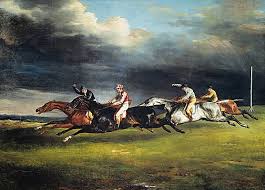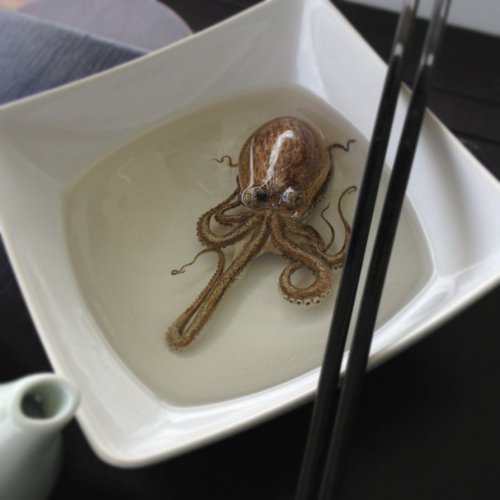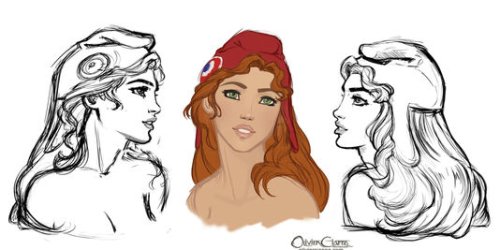Watching is an act of belief and if there is someone who speaks from experience, it is Saint Thomas. However, it is not the only one to say so.
Today, St. Thomas has a great great ... grand-son named Chris Buck . Indeed, in « Presence » that photographer, against all odds, photograph celebrities ... hidden and invisible ! Deuce, what a feat ! He managed to photograph celebrities ... invisible. And the last state in black and white, they are present on or in these shots.
1 Movement
In another development that reinforces our position : watch is believing, many artists of note that also know how the false to true as shown by the famous horses of the Epson Derby Géricault or the impossible position of L walking Man Rodin.
Yet it was long believed that these horses, all four paws in the air, representing the actual position of a galloping horse until the photo to put everything on the floor. How ? introducing us to other positions. Today we take for certain affirmation of the picture until the day it will contradict itself, thanks to a greater rate of shooting, for example, unless a new cutting technique movement demonstrates by then otherwise. Until that day, we will believe that the position of the pasterns of a galloping horse is the one indicated by the photograph. Incidentally, this brings us back to the principle of Heisenberg says that the observer and the observation technique transform reality. Gosh ! From the moment when we no longer believe in a system of representation, it no longer represents the « reality » !

2 Light
In another, although ultimately, this is practically the same, we think we see the white in a lighted tunnel sodium [1] despite its strong dominant orange. Yet, as we remember the photography, white is not white. It is our brain that, here as elsewhere, tells stories by leaving us or making us believe that white is white. The brain he would wash whiter than detergent and without using any pernicious propaganda ?
In this area, the Matisse lights confirm our belief that looking is believing even if it prefers to use the term view rather than that we prefer to look. Indeed, like him, we think that « Seeing is already a creative process that takes effort. » It is therefore telling stories ... The proof that it is only a matter of belief it took almost thirty years for the Impressionists are credited this ability to represent sunsets in front of the cathedral or in front of bales of hay.
3 Recognition
« Indeed, » recognize « someone, and more, after not being able to recognize, identify, think it’s under one name two contradictory things is to admit that what was here, being one remembers is not, and what there is, is a being we did not know ; it’s having to think nearly as troubling mystery than death which he remains the preface and the herald. »« Time Regained »Marcel Proust.
This quote from Proust could serve as an epigraph to a biographical anecdote. "At twenty-two, Marcel was in love with a young Adonis Geneva, Edgar Aubert. At the back of the photograph that gave him Aubert, was registered as a dedication :
Look at my face. My name is Might-have-been. I am aussi called Expired No More, Too Late, Farewell.
Proust knew that those words were taken from a sonnet of the Pre-Raphaelite painter Dante Gabriel Rossetti. This sonnet was entitled « Stillborn Love ». He was prescient : a few weeks later, Edgar Aubert was carried by acute appendicitis. According to Roland Jaccard , this dedication and accompanied Proust haunted throughout his life : what could have been and what was not "In fact, this relentless pursuit of what could have been and was not. is nothing but a perpetual reconnaissance work in the military sense ?
What is being done on the other when looking at this flat which presents an octopus painted by Lye Keng, if a real octopus that we are tempted to eat although it is designed as the bottom of the plate ? Is not the simultaneous recognition of the true octopus, fake octopus and technical mastery of the painter ? Recognition enhanced by the irony of the title.
4 The vision would it be a memory of species ?
4.a Remembrance likeness
In view of section M of the week of the World supplement, one can question. Indeed, what does one other in this section as to summon the memory of the shape of the letter M to assert that this assemblage of objects, clouds, or both combined together or this assemblage of human beings we remember the initial letter of the newspaper. We only remember a shape : that of the letter M and it is because there remember that there is re-cognition and here, the re is fundamental because it simultaneously means repetition and novelty.
4.b Remembrance difference
The novelty, as we recall the experience of the soldier, who, every time he goes hand in recognition rediscover a field he does not know, or if he already knows, will discover its transformations. The appearance of an enemy soldier being Transformation par excellence. Discovery that is found in expressions like « recognition of lands » or « recognition of unknown territory. »
Recognize it is also distinguish the quality of an object, a person, that is to say, to know again something familiar in an unfamiliar envelope. That is to say, discover similarities in difference or vice versa. This one is the mimesis, which, according to Aristotle, is accessible even to the child and the vulgar. And, according to Aristotle, this re-cognition one : that which distinguishes representation represented -so differences in ressemblance- brings by this recognition, new knowledge.
Finally, the verb recognize, rather than talk about the repetition, talks about the new, the renewal of this experience : to know. Knowing which one could say that the etymology [2] con-ie born not born with born avérée- -étymologie speaks to something when you discover something, an area of knowledge or even someone in the biblical sense expression about a woman. And it is true that new a little bit important knowledge is a new birth and get to know a woman is far from being any new births.
Diane Arbus she evokes this knowledge again when it states : « A picture is a secret about a secret, the more it tells you the less you know. » [3]
All that reconnaissance work is to get the images of their cenotaphs just as we specify Diane Arbus. When Jonathan Swift [4] states : « See art is to see the invisible. » [5] not he confirms about Dyane Arbus ?
Without this work of re-cognition, the narration of Anna-Karin Quinto around the theme of cherry blossoms would have no meaning, no matter that in this quest it is actually or virtually visited the places mentioned, whether or not view these famous cherry trees. This reconnaissance work-including in the military sense evoked more speaker could not exist without the knowledge of cherry it ad minima seen in Europe.
The trompe l’oeil, whether decorative or desire to trap, is another demonstration of this process of re-cognition. Indeed, this type of « image leads us to recognize a landscape, a place while giving us more or less quickly aware that it is not what it claims to be. If there is some something that shows the words of Aristotle, it is the sham. Does this mean that Plato plant ? »Ask the people around you that makes them think that Marianne. Some evoke the Virgin Mary, in some Falbala Asterix, others a Disney princess, others a manga heroine. No answer will be the same, but each will be « true ». And that’s good. Each of appropriating Marianne and imagine the character that suits him. It is the goal of any work of art, however modest it may be. "Olivier Ciappa (Artist, creator of the new Marianne stamp) [6] So everyone believes in a native Marianne including those who see in Marianne’s face a resemblance to Sophie Marceau.
5 A bit of mythology, it can never hurt !
If one believes the mythology of the invention of perspective, it was first invented in the ancient Greek theater to believe that the theater piece, the scene (to the cutting direction of the text) unfolded before our eyes. Here, it is essential to believe because it reminds us that the inventors were not fooled their inventions unlike the majority of us who has forgotten the essential : the prospect is first and foremost an illusion optical. This is why even for an image’s perspective, « seeing is believing ! » ; however make-believe that it represents the real, does not exist without the belief which is its counterpart. There is to believe that if there is a make-believe and no matter the origin proved or not this make-believe. They are inseparable.
Indeed, the image’s perspective must cope with the fact that it represents only a part of reality and we, too, we must make do [7] with the fact that it represents only that part real. And descrambling, we have long forgotten. Can we conclude that the image’s perspective is a blurred image in the sense of information theory ? Certainly. Indeed, it is blurred by its code and this code, we take for granted, we drafts vision. And this cash-there-as all singe- currencies belongs to belief.
 Regard sur l’image
Regard sur l’image


